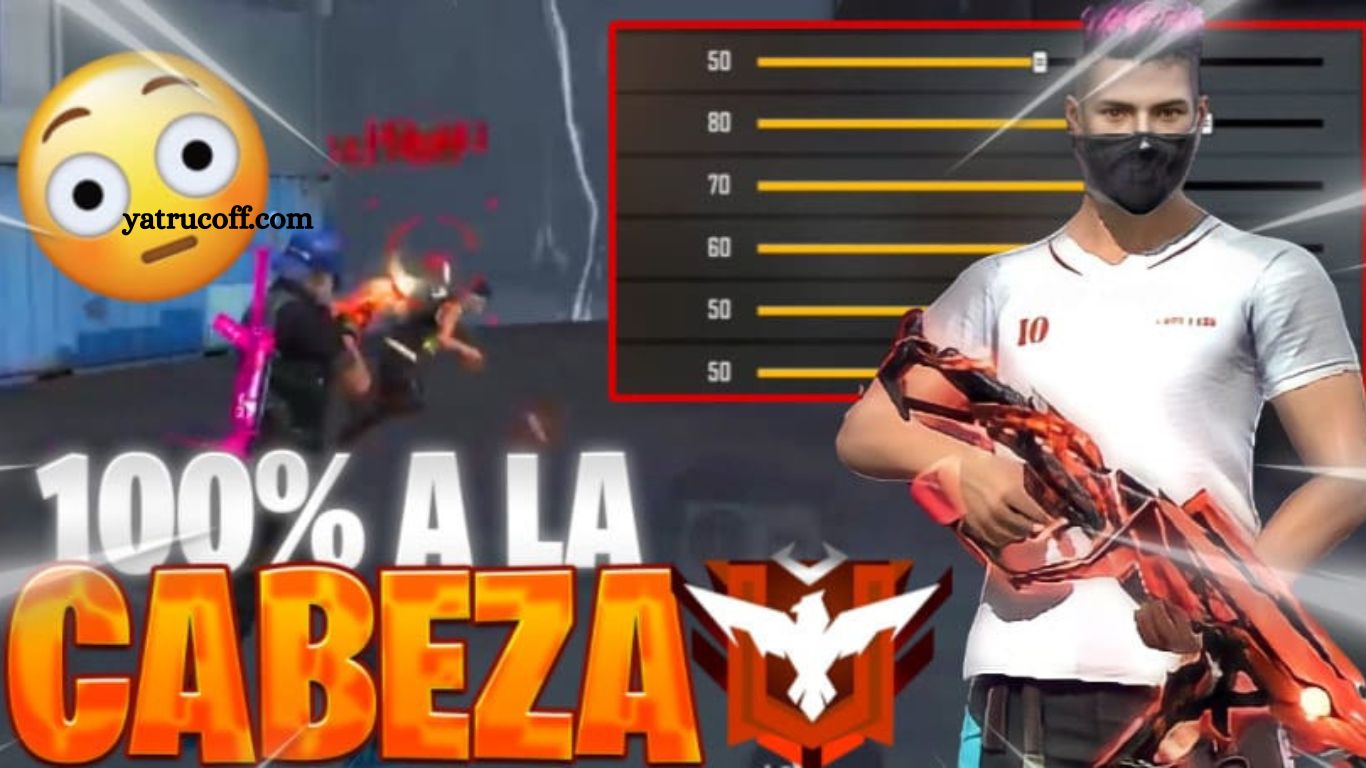In the competitive world of Free Fire, fine-tuning your sensitivity settings can significantly elevate your gameplay. As one of the leading mobile battle royale titles developed by Garena, Free Fire demands precision, speed, and adaptability. Sensitivity settings directly impact how quickly and accurately you can aim, turn, and respond to opponents, making them a crucial element of performance optimization. Whether you’re engaging in close-quarters combat or sniping from a distance, the right sensitivity configuration enhances control, improves reaction time, and increases overall efficiency. This guide delves into the strategic importance of sensitivity in Free Fire, providing expert insights on how to adjust your settings for maximum impact and offering practical tips to help you gain a competitive edge in every match.
Read More: Demonic Configuration FF 2025
The Importance of Sensitivity in Free Fire
In a fast-paced shooter like Free Fire, precision and responsiveness are vital to achieving success. Sensitivity settings directly influence how swiftly and smoothly a player can rotate their character and aim at targets. Improper sensitivity configurations often result in sluggish movements and imprecise shots, placing players at a significant disadvantage against opponents. By calibrating sensitivity appropriately, players enhance their ability to react promptly, execute accurate aiming, and maintain fluid, controlled movements—factors that collectively contribute to improved performance and a competitive edge in every match.
The Process of Adjusting Sensitivity in Free Fire
Optimizing sensitivity settings in Free Fire requires patience and careful experimentation to identify the configuration that best aligns with an individual player’s skills and preferences. The process involves several key steps:
- Understand Sensitivity Options
Free Fire provides multiple sensitivity settings, including general sensitivity, aiming sensitivity, and thumb sensitivity. Each setting controls different gameplay mechanics, such as character movement speed, rotation responsiveness, and aiming precision. - Select a Comfortable Starting Point
Begin with a sensitivity level that feels manageable. Sensitivity set too high may compromise control, while too low can hinder reaction time and agility. - Test and Evaluate
Apply the initial settings in live matches to assess their effectiveness. Pay close attention to movement fluidity and aiming accuracy. - Make Gradual Adjustments
Refine sensitivity incrementally to precisely gauge improvements or challenges, avoiding drastic changes that can disrupt muscle memory. - Maintain Consistency
Consistent settings facilitate the development of muscle memory, essential for sustained accuracy and control. - Personalize Your Configuration
Recognize that no single sensitivity setting fits all players. Experimenting with various configurations is vital to discovering what complements your unique playstyle and maximizes performance.
Tips for Optimizing Performance with High Sensitivity
Once you have identified the optimal sensitivity setting, implementing strategic practices can further enhance your performance in Free Fire. Consider the following tips to maximize your gameplay:
- Consistent Training
Regular practice is essential to mastering sensitivity control. Utilize shooting ranges and practice matches to develop muscle memory, refine your aiming precision, and build confidence. - Maintain Smooth, Controlled Movements
While higher sensitivity enables quicker reactions, it can also cause erratic or jerky movements. Focus on cultivating fluid, deliberate motions to improve accuracy and overall control during engagements. - Contextual Sensitivity Adjustments
Adapt your sensitivity settings based on weapon types or match scenarios. For instance, lower sensitivity may benefit long-range sniper shots, whereas higher sensitivity enhances close-quarters combat with automatic weapons. - Leverage Advanced Tools and Settings
Explore advanced sensitivity configurations and consider integrating peripherals or sensors designed to boost accuracy and responsiveness, elevating your gameplay setup. - Engage with the Community
Tap into the collective knowledge of the Free Fire community. Participate in forums, watch expert tutorials, and learn from seasoned players to discover new sensitivity adjustment strategies.
By integrating these tips alongside your customized sensitivity settings, you can significantly improve your precision, reaction time, and overall effectiveness on the battlefield. Prepare to dominate your opponents with enhanced control and speed.
Frequently Asked Questions
What is sensitivity in Free Fire, and why is it important?
Sensitivity controls how quickly your character moves and aims in response to your touch input. Proper sensitivity settings are crucial for accuracy, reaction speed, and overall control, directly impacting your in-game performance.
How do I find the best sensitivity settings for me?
Finding the ideal sensitivity involves starting with a comfortable baseline, then gradually adjusting settings while practicing in matches or training modes. Personal preference and playstyle play significant roles in determining the optimal setup.
Should sensitivity settings differ based on the weapon I use?
Yes. It’s common to use lower sensitivity for precision weapons like sniper rifles and higher sensitivity for automatic or close-range weapons to balance control and speed.
Can high sensitivity negatively affect gameplay?
If set too high, sensitivity can cause erratic or imprecise movements, making it harder to aim steadily. It’s important to balance speed and control by adjusting sensitivity gradually.
How often should I change my sensitivity settings?
Frequent changes can disrupt muscle memory and reduce consistency. It’s best to make small, infrequent adjustments and maintain settings long enough to adapt.
Are there tools or peripherals to help improve sensitivity and control?
Yes. Some players use gaming controllers, specialized touchpads, or external sensors to enhance responsiveness and accuracy beyond default touchscreen controls.
Conclusion
Optimizing sensitivity settings in Free Fire is a fundamental step toward enhancing your gameplay and gaining a competitive advantage. By understanding the impact of sensitivity on aiming precision and movement control, players can tailor their settings to match their unique playstyle and skill level. Through consistent practice, gradual adjustments, and strategic experimentation, it’s possible to unlock improved reaction times and more accurate shots.

